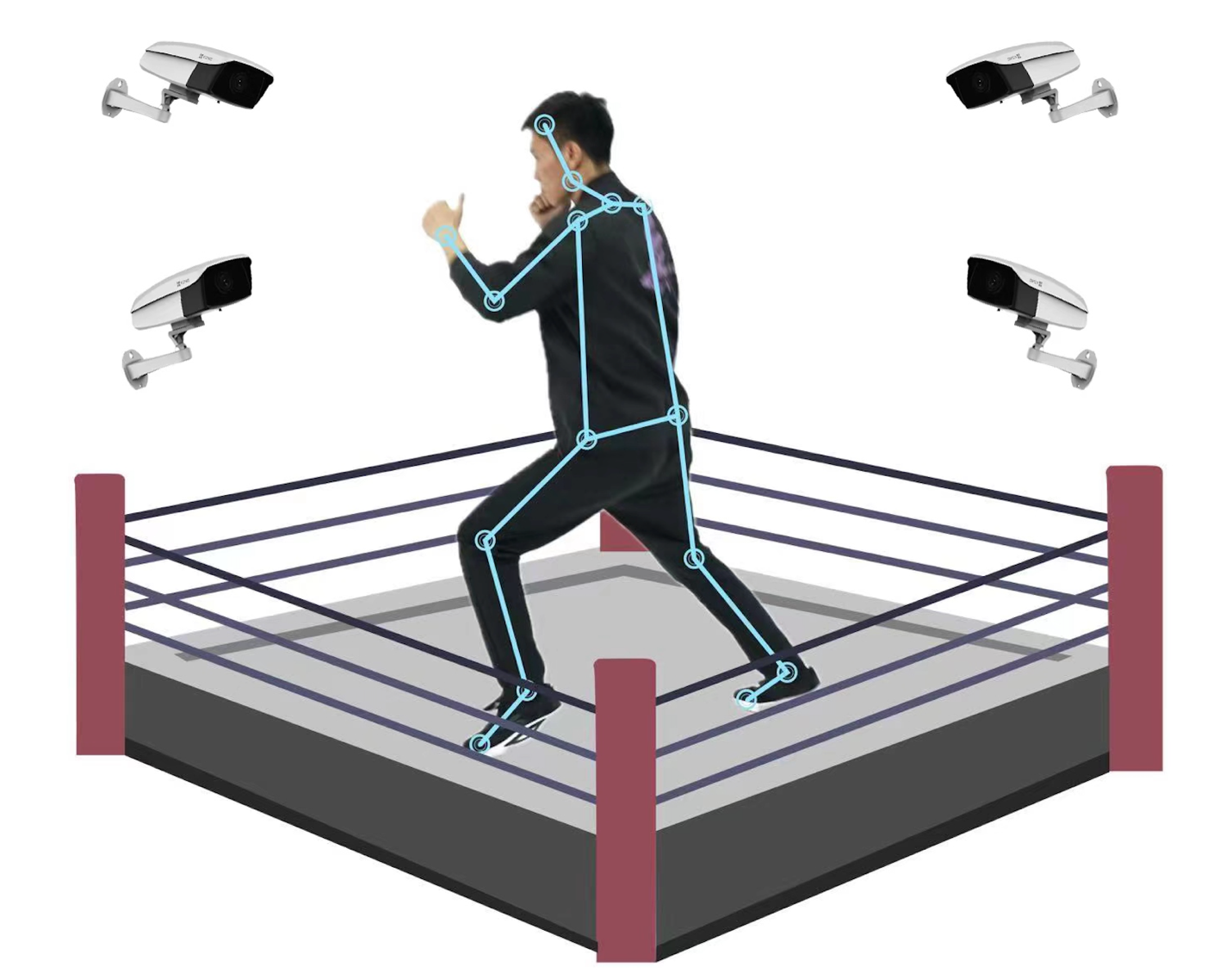Not only did these engineers help China’s female boxers win three gold and two silver medals, they also set a new bar for automated sports analysis tools.
For years, Chang Yuan endured training sessions so grueling she described them as akin to “peeling a layer off” her skin. Yet her hard work paid off when she became the first Chinese woman to win both an Olympics boxing title and gold medal at the 2024 Paris Olympics.
 Tsinghua researchers developed a suite of hardware and software solutions to collect and process data, including smart boxing rings, punching bags fitted with high-speed cameras, 3D-motion capture systems, muscle signal sensors, gyroscopes, accelerometers, and other wearable devices.
Tsinghua researchers developed a suite of hardware and software solutions to collect and process data, including smart boxing rings, punching bags fitted with high-speed cameras, 3D-motion capture systems, muscle signal sensors, gyroscopes, accelerometers, and other wearable devices.
Chang’s victory was the first of a raft of wins. Her team would go on to take two additional gold and two silver medals — an unprecedented feat for Chinese female boxers.
As with all athletes, their success can be traced to a large supporting cast: coaches, physiotherapists, supportive parents, but also increasingly — as the world embraces data scientists — experts such as Professor Ji Wu from Tsinghua’s Department of Electronic Engineering.
In 2023, Wu led a team that developed an intelligent training platform for the national boxing team. The platform comprises of a novel system of video monitors and sensors to evaluate athlete performance, and automatically analyze matches in real-time.
“I believe our biggest contribution at this stage was quantifying the athletes’ training outcomes,” says Wu. “With our system, coaches could accurately understand the condition and performance of each athlete, allowing them to create individualized training plans, pair them with suitable sparring partners, and continuously analyze their strengths and weaknesses.”
Then, as the coaches and athletes made tweaks to strategies, the system could indicate whether these changes were improving outcomes.
A wealth of data
To create the intelligent platform, Wu and his collaborators worked closely with the boxing team to develop a suite of software and hardware solutions. These included smart boxing rings fitted with high-speed cameras, punching bags fitted with IMU sensors and 3D-motion capture systems, muscle signal sensors and other wearable devices.
These resulted in a wealth of data about each of the eight boxers and all their sparring partners they were monitoring — including punch strength and angle, striking efficiency, muscle activation and levels of fatigue.
This data allows the generation of highly detailed sports performance analysis reports, which “rapidly improved the quality and efficiency of training,” says Wu.
The system, for instance, recommended that one boxer be more pro-active in her first-round bouts to boost her chances by bolstering her confidence. Her coach, Fernandez Liranza Raul Angelthen, then worked to improve her attack rhythm and the quality of both her effective punches and defensive counterattacks.
 Tsinghua engineers created a tool that annotates boxing features in videos — such as punch types and boxing rhythm — to analyze matches in real-time during Olympic events.
Tsinghua engineers created a tool that annotates boxing features in videos — such as punch types and boxing rhythm — to analyze matches in real-time during Olympic events.
Rapid, accurate match analysis
The coaches also lamented how there was often insufficient time during the Olympics and “within tight competition schedules” to thoroughly scrutinize an upcoming opponent’s past matches for strengths and weaknesses to formulate an appropriate game strategy.
Wu and his fellow researchers devised a unique solution. They amassed roughly 94 hours across 601 bouts from publicly available videos of the boxers’ potential opponents from events for the three years prior, as well as roughly 18 hours and 89 bouts from the Chinese boxing team’s pre-Olympic preparation. Then they worked with the Chinese team’s coaches to create a tool that could annotate features, such as punch types and boxing rhythm.
With this annotated video data, they then developed an automated video analysis system that could analyze matches in real-time during Olympic events, and rapidly churn out a report within an hour.
“Our system can simultaneously extract and analyze more than 20 tactical and technical metrics, such as torso hits or left punches, for both boxers directly from the videos, achieving an accuracy level comparable to human analysts while significantly surpassing them in analysis speed,” explains Wu. Metrics include punching speed and types of punches used.
It’s this technology that his team is proudest of having developed for the project, he says. “It represents a major breakthrough in automated sports analysis.”
Editor: Guo Lili